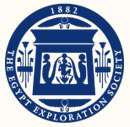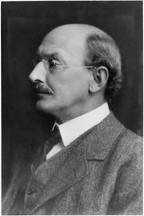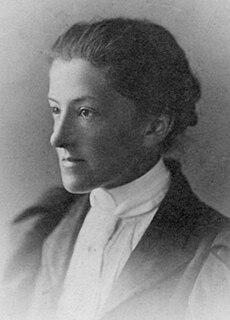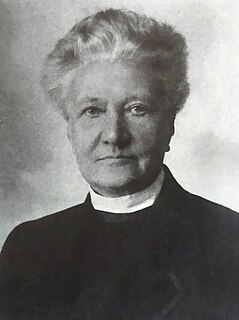
Sir William Matthew Flinders Petrie, commonly known as simply Flinders Petrie, was a British Egyptologist and a pioneer of systematic methodology in archaeology and the preservation of artefacts. He held the first chair of Egyptology in the United Kingdom, and excavated many of the most important archaeological sites in Egypt in conjunction with his wife, Hilda Urlin. Some consider his most famous discovery to be that of the Merneptah Stele, an opinion with which Petrie himself concurred.

The Egypt Exploration Society (EES) is a British non-profit organization. The society was founded in 1882 by Amelia Edwards and Reginald Stuart Poole in order to examine and excavate in the areas of Egypt and Sudan. The intent was to study and analyze the results of the excavations and publish the information for the scholarly world. The EES have worked at many major Egyptian excavation and sites. Their discoveries include the discovery of a shrine for the goddess Hathor, a statue of a cow from Deir el-Bahri, the mortuary temple of Queen Hatshepsut, and the sculpted model of Nefertiti from Amarna. The Society has made major contributions to the study of the ancient Egyptian world. The Society is based in London and is a registered charity under English law.

Amelia Ann Blanford Edwards, also known as Amelia B. Edwards, was an English novelist, journalist, traveller and Egyptologist. Her literary successes included the ghost story "The Phantom Coach" (1864), the novels Barbara's History (1864) and Lord Brackenbury (1880), and the travelogue of Egypt A Thousand Miles up the Nile (1877). She also edited a poetry anthology published in 1878. In 1882, she co-founded the Egypt Exploration Fund. She gained the nickname "Godmother of Egyptology" for her contribution.

The Petrie Museum of Egyptian Archaeology in London is part of University College London Museums and Collections. The museum contains over 80,000 objects and ranks among some of the world's leading collections of Egyptian and Sudanese material.

Meidum, Maydum or Maidum is an archaeological site in Lower Egypt. It contains a large pyramid and several mudbrick mastabas. The pyramid was Egypt's first straight-sided one, but it partially collapsed in ancient times. The area is located around 72 kilometres (45 mi) south of modern Cairo.

Francis Llewellyn Griffith was an eminent British Egyptologist of the late 19th and early 20th centuries.
Stephen Ranulph Kingdon Glanville, was an English historian and egyptologist. He was Edwards Professor of Egyptology at University College London from 1935 to 1946. He was then Sir Herbert Thompson Professor of Egyptology at the University of Cambridge from 1946 until his death in 1956, and additionally Provost of King's College, Cambridge from 1954.

Sitamun, also Sitamen,Satamun; Ancient Egyptian: sꜣ.t-imn, "daughter of Amun" was an ancient Egyptian princess and queen consort during the 18th Dynasty.

Tall al-Ajjul or Tell el-'Ajul is an archaeological mound or tell in the Gaza Strip. The fortified city excavated at the site dates as far back as ca. 2000-1800 BCE and was inhabited during the Bronze Age. It is located at the mouth of Wadi Ghazzah just south of the town of Gaza.
Percy Edward Newberry was a British Egyptologist.

Seked is an ancient Egyptian term describing the inclination of the triangular faces of a right pyramid. The system was based on the Egyptians' length measure known as the royal cubit. It was subdivided into seven palms, each of which was sub-divided into four digits. The inclination of measured slopes was therefore expressed as the number of horizontal palms and digits relative to each royal cubit rise.
Repyt, or Repit, was an ancient Egyptian goddess. Typically, she was portrayed as one of the lioness goddesses of Egypt. Her husband was Min.

Hilda Mary Isabel Petrie was an Irish-born British Egyptologist and wife of Flinders Petrie, the father of scientific archaeology. Having studied geology, she was hired by Flinders Petrie at age 25 as an artist, which led to their marriage and a working partnership that endured for their lifetimes. Hilda travelled and worked with Flinders Petrie to excavate and record numerous sites in Egypt, and later in Palestine. This included directing some excavations herself, and working in often difficult and dangerous conditions to produce copies of tomb hieroglyphs and plans, and to record the work for reports to the Egypt Exploration Fund. When the British School of Archaeology in Egypt was founded in 1905 in London by Flinders Petrie, she worked as its secretary and fundraiser to secure support for the school and their continued excavations. Hilda took part in archaeological excavations and surveys throughout her married life, except for a period while their two children were young. Her work was published, and she also gave public lectures in London and elsewhere.

Kate Bradbury Griffith aka Kate Griffith was a British Egyptologist who assisted in the early development of the Egypt Exploration Society and the Department of Egyptology at University College London (UCL). Bradbury was born in Ashton-under-Lyne, near Manchester, UK, to Elizabeth Ann Tomlins and businessman Charles Timothy Bradbury.
Violette Lafleur was a Canadian conservator and curator for the Department of Egyptology and Petrie Museum of Egyptian Archaeology, University College London.
Margaret Stefana Drower MBE (1911–2012) was a historian of Ancient Near Eastern History and Egyptology. She was awarded the MBE and elected a Fellow of the Society of Antiquaries of London. She wrote the definitive biography of Flinders Petrie.

Mary (May) Brodrick was a British archaeologist and Egyptologist who was one of the first female excavators in Egypt. She persisted in her studies despite the initial opposition of her tutors and fellow students and achieved distinction in her field. The Daily Mail described her in 1906 as "perhaps the greatest lady Egyptologist of the day".
Elise Jenny Baumgartel was a German Egyptologist and prehistorian who pioneered the study of the archaeology of predynastic Egypt.
William Petrie (1821–1908) was an English electrical engineer, known for the development of the arc lamp.
Henry Sidney "Harry" Smith, is a British Egyptologist and academic, specialising in epigraphy and Egyptian archaeology. He held the Edwards Chair of Egyptology at University College London from 1970 to 1986. He had previously been a lecturer in Egyptology at the University of Cambridge, where he was also Budge Fellow in Egyptology at Christ's College, Cambridge.











